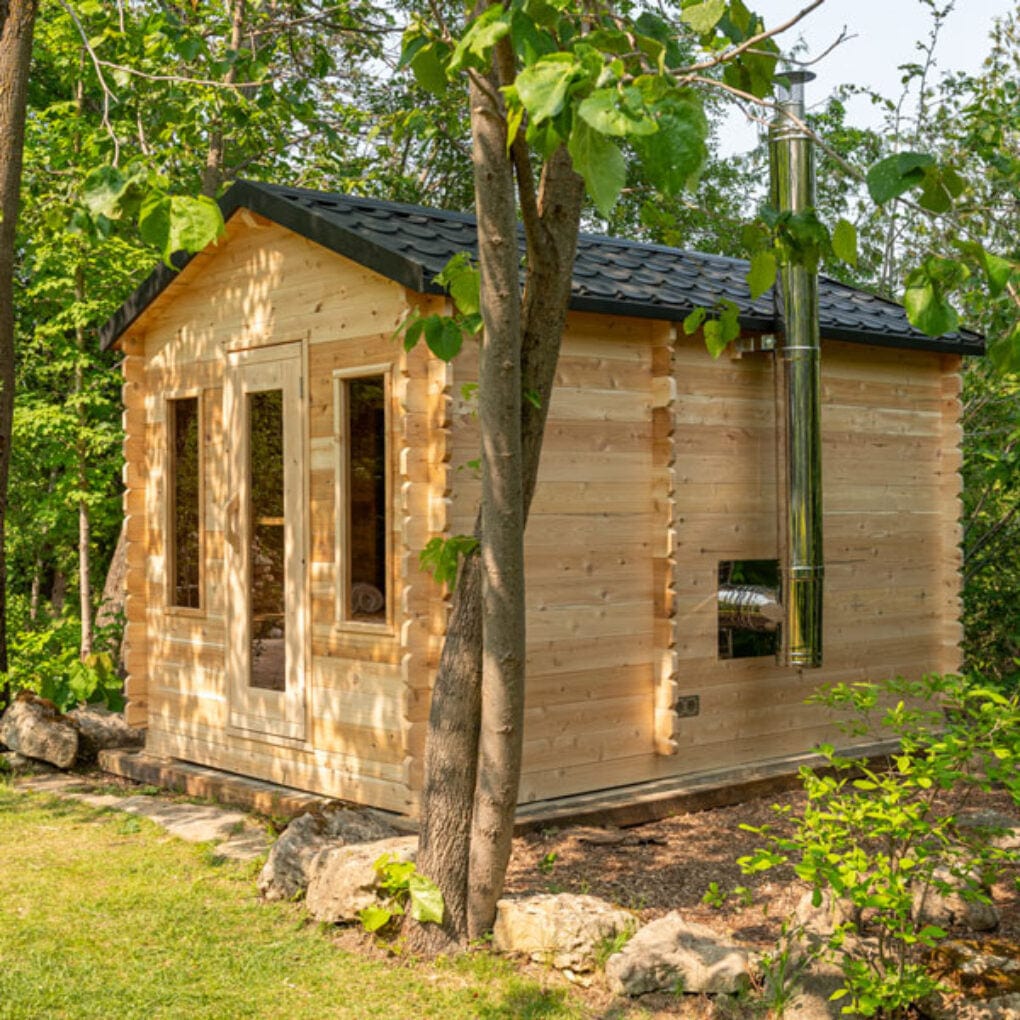4 Easy Facts About Traditional Sauna Described
4 Easy Facts About Traditional Sauna Described
Blog Article
Getting My Traditional Sauna To Work
Table of ContentsExamine This Report about Traditional SaunaGetting The Traditional Sauna To WorkTraditional Sauna for BeginnersExcitement About Traditional SaunaThings about Traditional Sauna
Energy financial savings is one point to think about for people who intend on utilizing their sauna often. For a standard sauna, bathers usually require to wait for 30-40 mins for the room to preheat before entering. Infrared saunas, on the other hand, usually reach their suitable temperature level in around 15 mins.That suggests that in an infrared sauna, bathers can begin appreciating their sauna promptly. One difference in between both kinds of sauna that is typically neglected is the social experience. Conventional saunas are typically large enough to fit numerous individuals and enable for socializing. Infrared saunas are usually smaller in size, giving even more of a personal escape and much less of a social experience.
Take into consideration how many individuals will certainly be using the sauna prior to making your decision - Traditional Sauna. Including a sauna to your home can be among one of the most amazing and gratifying decisions you'll ever make. Routine sauna use will certainly boost your blood circulation, maintain much healthier skin, assistance kidney function, minimize blood pressure, enhance mind function, and far more
Fascination About Traditional Sauna

Infrared and typical completely dry saunas are both popular options for those looking for relaxation and restorative advantages. Nonetheless, there are some vital distinctions in between the 2 kinds of saunas that ought to be taken into consideration prior to making a choice. Typical dry saunas use warmed rocks to generate vapor, while infrared saunas make use of infrared heating systems to directly heat the body.
Elements such as heat tolerance, desired degree of detoxing, and total wellness ought to be taken into account when choosing which sort of sauna to use. Infrared saunas are a kind of sauna that use infrared light to warm the body straight, instead than heating up the air around the body like traditional saunas.
The temperature level in an infrared sauna is usually less than in a traditional sauna, with temperature levels varying from 120F to 150F. Traditional Sauna. Infrared saunas use an array of advantages that make them an appealing option for those aiming to boost their health and wellness and wellness. Some of the advantages of infrared saunas consist of: Infrared saunas use reduced temperature levels than conventional saunas, which can make them more comfy for those who find high temperature levels tough to tolerate
What Does Traditional Sauna Do?
This can aid to promote leisure, reduce muscular tissue tension, and eliminate pain. Some professionals recommend that infrared saunas may supply benefits for soothing a sore throat. Infrared saunas have actually been shown to assist the body remove toxins with sweating. Sweating can likewise assist to enhance skin health by removing impurities and dead skin cells.
The heat created by infrared saunas can assist to boost blood circulation and enhance flow. Infrared saunas have been shown to assist reduce stress and anxiety and advertise leisure.

Things about Traditional Sauna

There are a number of advantages to using a traditional dry sauna. Below are a few: Relaxation: The heat and low moisture in conventional dry saunas can aid unwind the muscular tissues and lower tension degrees. Detoxification: Sweating in a sauna can help eliminate toxins from the body, which can enhance total health.
When it concerns saunas, there are two primary sorts of heating approaches: standard and infrared. Traditional saunas utilize warmed air to heat the body, while infrared saunas utilize infrared radiation to pass through the skin and warm the body from within. Among the main distinctions in between both techniques is the sort of warmth they generate.
However, because infrared radiation penetrates the skin a lot more deeply, it can generate a similar sweat response at lower temperatures. An additional difference is the means the warmth is dispersed. Typical saunas warm the air, which after that warms the body through convection. Infrared saunas, on the various other hand, warmth the body straight with radiation.
In regards to power efficiency, infrared saunas are generally much more efficient than traditional saunas because they call for much less power to run. They also warm up quicker, so they can be utilized for shorter sessions. When it concerns the effects on the body, both types of saunas have actually been shown to have benefits.
The 4-Minute Rule for Traditional Sauna
Infrared saunas have actually been shown to have comparable advantages, along with potentially aiding with cleansing, skin health, and immune feature. Overall, the choice in between a standard or infrared sauna boils down to personal choice and individual requirements. Typical saunas might be better for those that prefer greater temperature levels and a more extreme sweat reaction, useful content while infrared saunas might be better for those that desire a more gentle and reliable heat click for more treatment.
Both kinds of saunas offer special advantages and disadvantages that need to be taken into consideration before choosing. The choice in between an infrared sauna and a typical dry sauna greatly depends on individual preference and the preferred advantages - Traditional Sauna. Those who choose an even more comfy, reduced temperature atmosphere might prefer an infrared sauna, while those who are seeking extreme heat and a traditional sauna experience may like a typical dry sauna
Here are some security pointers to maintain in mind when using infrared and traditional dry saunas:: Saunas can trigger extreme sweating, leading to dehydration. It is very important to consume plenty of water previously, during, and after sauna sessions to stay hydrated.: It is suggested to restrict sauna sessions to 20-30 mins to prevent overheating and dehydration.
Report this page